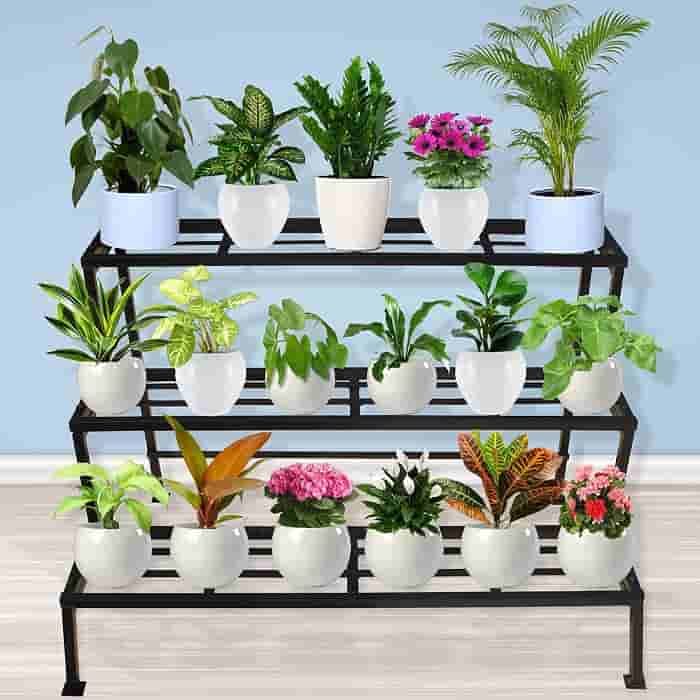Creating a wildlife-friendly garden can transform your backyard into a thriving ecosystem that supports local biodiversity while offering you a peaceful and vibrant outdoor space. This guide will provide you with practical advice on how to design and maintain a garden that attracts and supports various wildlife species, from birds and bees to small mammals and amphibians.
Introduction
Gardening for wildlife is more than just a trend; it’s a commitment to fostering biodiversity and supporting local ecosystems. A wildlife-friendly garden offers numerous benefits, including a healthier environment, enhanced beauty, and increased opportunities for personal relaxation and learning. By creating a space that supports wildlife, you contribute to the conservation of species, create habitats, and promote a balanced ecosystem in your community.
Understanding Wildlife Gardening
What is Wildlife Gardening?
Wildlife gardening involves cultivating a garden that provides food, shelter, and breeding spaces for various wildlife species. It focuses on using native plants, providing water sources, and creating diverse habitats to support a wide range of creatures, from insects to birds and mammals.
Why is it Important for Biodiversity?
Biodiversity is vital for a healthy and resilient environment. Wildlife gardening supports biodiversity by creating habitats that encourage the presence of various species. By planting native flora and avoiding chemicals, gardeners can help sustain pollinators like bees and butterflies, which are crucial for the reproduction of many plants and the overall health of the ecosystem.
Key Elements of a Wildlife-Friendly Garden
Native Plants and Their Importance
Native plants are crucial for wildlife gardening because they provide familiar and nutritious food sources for local fauna. These plants are adapted to the local climate and soil, making them more sustainable and requiring less maintenance. By incorporating a variety of native species, you can attract different types of wildlife, such as pollinators, birds, and small mammals.
Water Features: Attracting Birds and Amphibians
Water is a vital resource for all wildlife. Including a water feature, such as a pond, birdbath, or small fountain, can attract birds, amphibians, and insects. Ensure that the water source is accessible and safe, with shallow edges for smaller creatures and deeper areas for larger species.
Providing Shelter: Creating Habitats for Various Species
Wildlife needs safe places to rest, breed, and hide from predators. Incorporate features like dense shrubs, log piles, and rock gardens to provide shelter for various species. Birdhouses, bat boxes, and insect hotels are also excellent additions to support nesting and hibernation.
Importance of a Pesticide-Free Garden
Pesticides can be harmful to wildlife, particularly pollinators like bees and butterflies. Maintaining a pesticide-free garden helps ensure that your garden remains a safe environment for wildlife. Consider natural pest control methods, such as encouraging predatory insects like ladybugs and using companion planting to deter pests.
Designing Your Garden for Different Wildlife
Attracting Birds: Plants, Feeders, and Birdhouses
To attract birds, plant a variety of native shrubs and trees that produce berries, nuts, and seeds. Install bird feeders and birdhouses to provide additional food and nesting sites. Ensure the birdhouses are placed in safe locations, away from predators.
Creating a Butterfly and Bee Garden
A butterfly and bee garden should include a mix of nectar-rich flowers and host plants for caterpillars. Choose plants like milkweed for monarch butterflies and lavender for bees. Provide a shallow water dish with stones for insects to land on while drinking.
Supporting Small Mammals: Safe Spaces and Food Sources
Small mammals like hedgehogs, squirrels, and rabbits can thrive in gardens that offer shelter and food. Plant ground cover, such as ivy or tall grasses, and provide a variety of nuts, seeds, and fruits. Creating brush piles or leaving a section of the garden untamed can offer additional habitat.
Encouraging Amphibians and Reptiles: Ponds and Rocks
Amphibians and reptiles require water and basking areas. Create a small pond or water feature with shallow areas for amphibians to breed. Incorporate rocks and logs for reptiles to sun themselves and find shelter.
Seasonal Considerations for Wildlife Gardening
Spring: Planting and Nesting Preparations
Spring is a critical time for planting native species and preparing for the breeding season. Install birdhouses and insect hotels, and provide nesting materials like twigs and dried grasses.
Summer: Water and Shade Provisions
During the hot summer months, ensure your garden has adequate water sources and shaded areas. Regularly clean birdbaths and refill water features to provide fresh water for wildlife.
Autumn: Preparing for Winter and Food Storage
In autumn, leave seed heads on plants to provide food for birds. Consider planting autumn-blooming flowers to support pollinators preparing for winter. Create leaf piles and brush heaps for small mammals and insects to shelter in.
Winter: Providing Shelter and Food Sources
Winter is a challenging time for wildlife, so provide extra food through feeders and ensure there are adequate shelters, such as evergreen plants or log piles. Maintain a small, ice-free section in your water feature to offer a drinking source.
Common Mistakes to Avoid in Wildlife Gardening
Using Non-Native or Invasive Species
Non-native or invasive plants can disrupt local ecosystems and outcompete native species. Always choose native plants that are suited to your region and avoid those that could harm local wildlife.
Overuse of Pesticides and Chemicals
Chemicals can harm beneficial insects and other wildlife. Opt for organic gardening practices and use natural pest deterrents to maintain a healthy garden ecosystem.
Lack of Diversity in Planting
A lack of plant diversity can limit the types of wildlife your garden attracts. Include a variety of native species with different bloom times and structures to support a wide range of wildlife throughout the year.
Ignoring Seasonal Needs of Wildlife
Wildlife has different needs in each season. Plan your garden to provide year-round food, water, and shelter to support wildlife through all seasons.
Practical Tips for a Thriving Wildlife Garden
How to Choose the Right Plants
Select plants that are native to your region and suited to your garden’s soil and climate. Consider a mix of trees, shrubs, perennials, and annuals to provide varied habitats and food sources.
Building and Maintaining Birdhouses and Feeders
Install birdhouses and feeders at different heights and locations to cater to various bird species. Regularly clean feeders to prevent the spread of disease and ensure birdhouses are free from pests.
DIY Projects for Wildlife Shelters
Create simple shelters using natural materials like logs, branches, and leaves. Build insect hotels, hedgehog homes, and frog shelters to provide safe spaces for various species.
Sustainable Water Features and Their Maintenance
Design sustainable water features that are easy to maintain, such as ponds with native aquatic plants. Ensure water features have clean, fresh water, and maintain them regularly to prevent algae buildup.
The Benefits of a Wildlife Garden to You and the Environment
Personal Well-Being and Connection with Nature
Gardening for wildlife can enhance your mental and physical well-being by fostering a connection with nature. Spending time in a wildlife-friendly garden can reduce stress and increase relaxation.
Supporting Local Ecosystems and Biodiversity
A wildlife garden supports local ecosystems by providing habitats for various species. This contributes to greater biodiversity and helps maintain ecological balance in your area.
Educational Opportunities for Families and Communities
A wildlife garden offers educational opportunities for families and communities. It can be a space to learn about local flora and fauna, conservation, and sustainable gardening practices.
Conclusion
Gardening for wildlife is a rewarding endeavor that benefits both the environment and gardeners. By creating a garden that supports biodiversity, you contribute to a healthier planet and enjoy a beautiful, lively outdoor space filled with diverse wildlife.










Recent Comments